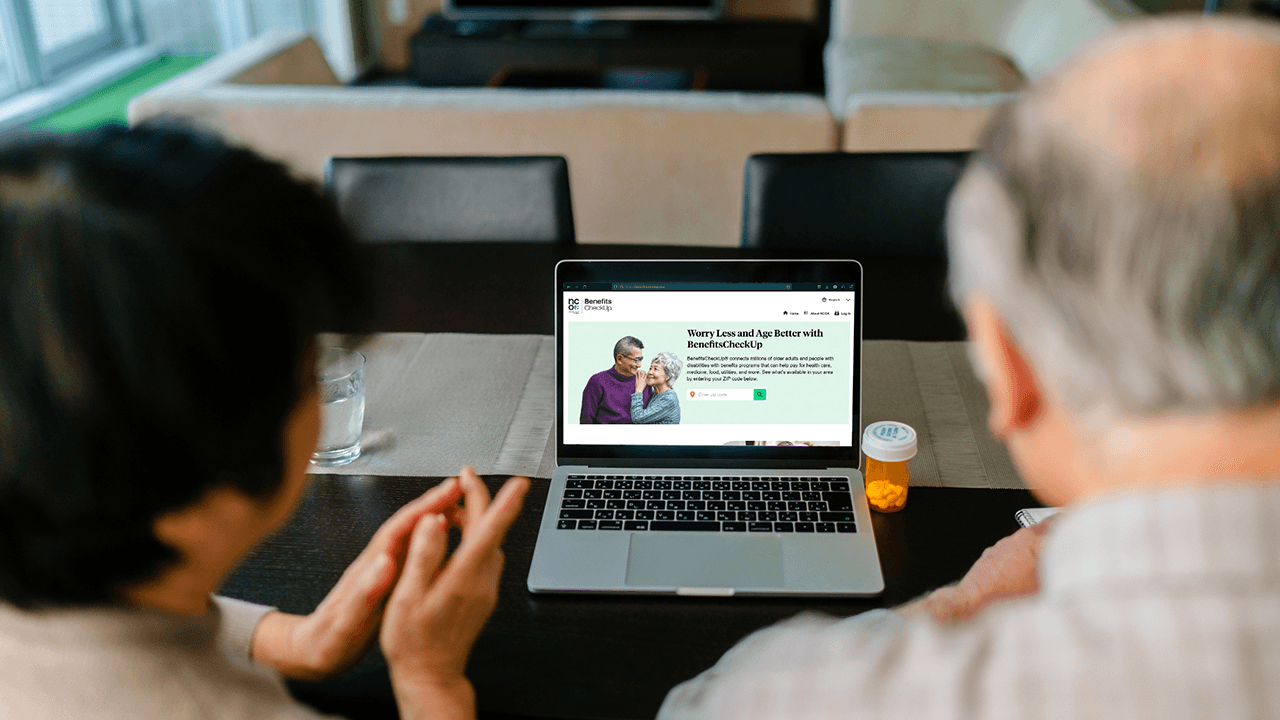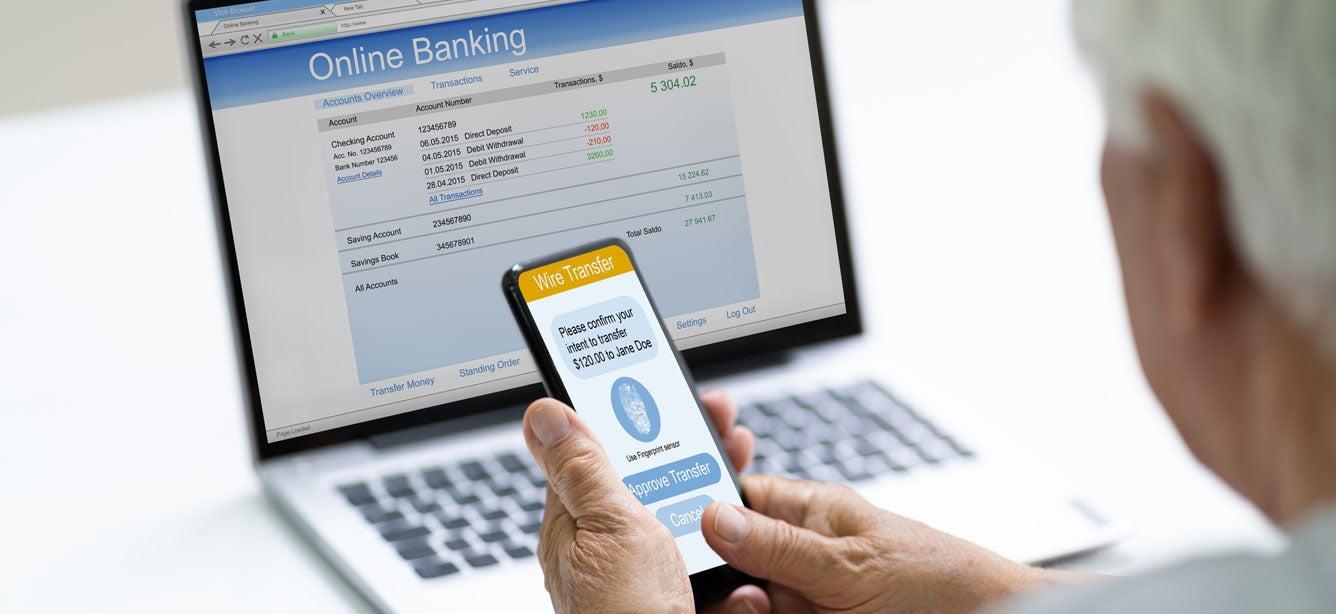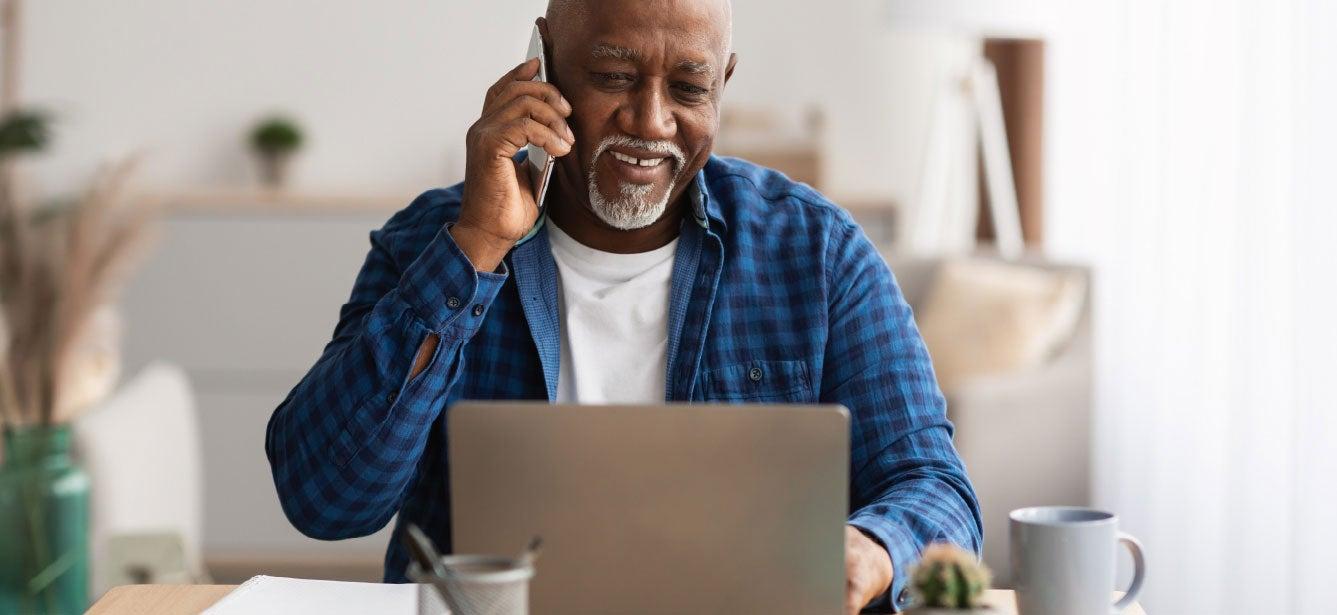Moving off the Landline Phone Network for Broadband Access: What Older Adults Need to Know
4 min read

Related Topics
The copper wire telephone network was the foundation for our communications system. Today, telecommunications carriers across the country are working to modernize the network to improve the way we communicate by moving toward an internet-based network.
Making the shift to broadband
The opportunity to have a broadband connection has changed daily life for millions of older adults. Broadband connection means transmission of wide bandwidth data over a high-speed internet connection.1 The range of services that broadband offered many of those isolated at home during the pandemic was a lifeline for health services, food and medication deliveries, entertainment, and a video connection to communicate with family and friends.
Now that broadband is recognized as an essential service, 70% of adults 65 and older have adopted broadband in their homes.2 This technology transition to broadband services is moving along quickly as older adults recognize its value and positive impact on daily life. For some, the added tech devices have required new skills and digital literacy learning.
The telephone network's long-overdue upgrade
Together with this effort to get older adults online and adopt tech devices to access broadband, another transition has been ongoing to modernize the telephone network. Over the last decade the telephone network has been receiving a long overdue upgrade to enable Voice Over Internet Protocol (VoIP)—or the ability to receive voice calls using internet software. This newer technology has replaced the need for the legacy copper wire network that has offered traditional voice service.
This effort to modernize the telephone network and move from the copper wire is being handled under strict oversight. While there’s not an official date to replace all the copper wiring across the U.S., the Federal Communications Commission (FCC) issued an order in 2019 to permit telecommunications carriers to stop selling and maintaining the copper phone lines.3 The FCC regulations are governing this ongoing transition closely.
In addition, to the FCC regulations, the telephone providers have also adopted important principles guiding them throughout this process. The most important principles for consumer are that: 1) No customer be abandoned and that a consumer always have access to voice service; 2) Networks be secure, sustainable, resilient, and reliable, and affordable; and 3) Public safety and access to 911 must be key components of all networks.
So, what are the primary benefits and the concerns of shifting from the copper wire to voice service over the broadband (or VoIP) for older adults?
A recent AARP article highlights the pros and cons for older adults of shifting away from voice over the copper wire network, and the benefits far outweigh any concerns.4 First and foremost, AARP highlights that you could save a ton of money, and while that’s super important anyone on a budget, there are other benefits as well:
- Quality of voice service: Voice service provided over a fiber network (rather than copper)—or VoIP, Voice over Internet Protocol—offers customers clear and more secure connections.
- Cost of service: Copper wire customers are paying increasingly higher costs for voice service as there are far fewer customers using this network today. Also, the copper wire network costs have greatly increased over the years, as maintaining those lines require higher costs and specialized labor skills.
- Advanced functions: In addition to voice, VoIP customers can take advantage of several advanced telecommunications services features (for example: voicemail delivered to email inboxes, or a smartphone app to complete calls using your home phone number anywhere).5
- A real handset: The handset is a universal concept, and users can get a handset that looks and feels like a traditional “telephone.” Consumers cannot tell the difference as to whether a call is riding over a copper wire or VoIP network when making or receiving a call in the home. A traditional style handset provides the comfort of something familiar.
Understandably, consumers are concerned about any possible changes to their voice service during an emergency, particularly when there’s a power outage. If the phone is operating on the VoIP network, it does have a battery back-up. The individual carriers can provide greater details regarding battery back-up, as well as any other concerns on how to maintain specialized services that you might have in your home that are currently connected to your copper wire network.
As with any transition, consumers will have ongoing questions. If you have any concerns or questions regarding your current network or service, contact your carrier.
Sources
1. Verizon. Broadband. Found on the internet at https://www.verizon.com/articles/internet-essentials/broadband-definition/
2. Statista. Percentage of U.S. population with internet access at home as of November 2021, by age group. Found on the internet at https://www.statista.com/statistics/368593/us-online-access-householder-age/
3. Federal Communications Commission. FCC Grants Relief From Outdated, Burdensome Phone Industry Regulations. Aug. 2, 2019. Found on the internet at https://www.fcc.gov/document/fcc-grants-relief-outdated-burdensome-phone-industry-regulations
4. John R. Quain. Is It Safe to Get Rid of Your Landline? AARP. Updated Jan. 2, 2024. Found on the internet at https://www.aarp.org/home-family/personal-technology/info-2020/get-rid-of-landline.html
5. Vonage for Home. What is VoIP? Found on the internet at https://www.vonageforhome.com/what-is-voip/




